
TWO RAINFORD SCHOLARS
Reverend John Sephton 1835 – 1915
You may be surprised to learn that two young boys left their family homes on School Brow in the middle of the 19th century to further their education. Each became a Church of England minister and dedicated his whole life to the service of education or the church.
The first of these was the Reverend John Sephton 1835 – 1915. Farmer and shopkeeper James Sephton and his wife Mary (née Webster) occupied a cottage on School Brow and it was here in 1835 that their son John was born, the first of their eight children. James & Mary built new dwelling houses and a shop just a few yards from their earlier home and this stone building near the entrance to Rose Drive, with the date stone J & M SEPHTON 1852, is still occupied today. By this time seventeen-year-old son John would have completed his early education and left home but his whereabouts remain a mystery until 1858.
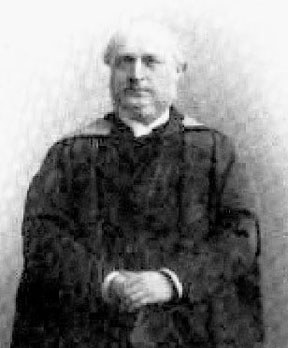
On the 7th of July 1858 John Sephton was admitted to St John’s College of Cambridge University as a ‘sizar’ student (i.e. a student of limited means paying reduced fees but having certain menial duties to perform.) He was awarded his Bachelor of Arts degree in 1862 having achieved the fifth highest marks in a gruelling mathematics examination comprising sixteen papers over eight days. After obtaining his Master of Arts degree; becoming a Fellow of St John’s College; and being ordained a deacon at Winchester, he held various appointments over the next four years. These included serving as Priest at Ely; Assistant Master at Highgate School, London; Clerk in Holy Orders at St Anne’s Church, Soho; and in 1866 he was appointed Head Master of the Liverpool Institute High School for Boys, (now the Liverpool Institute of Performing Arts). He also found time to proof-read and collaborate on many mathematical books by the eminent mathematician Isaac Todhunter, his former Tutor at Cambridge.
In April of the same year John was married to Clara Cooper at St John the Baptist Church, Hulme and they later had just one son, also named John. After twenty-three years he retired from the post of Head Master of the Institute. However, this was not the end of his academic life as he later became Reader in Icelandic at Liverpool University until 1910 during which time he wrote several books on the Icelandic Sagas. Even after retirement his appetite for learning was undiminished and after much serious research he published his 256 page “Handbook of Lancashire Place Names” in 1913. On the 25th of July 1915 in his eightieth year, he died at 90 Huskisson Street, Liverpool, his home for many years.
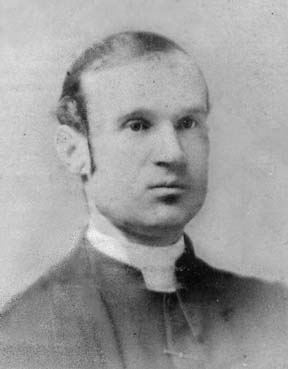
Reverend William Files 1849 – 1921
William Files was born in 1849, the first child of George Files and his wife Ann (née Gregson). He was born at the home of his mother’s parents at Bow Gate, Upholland but came to Rainford as a small child when his parents took up residence in a cottage on School Brow, just a few yards from the grocers’ shop of James & Mary Sephton. George was employed by the Liverpool Corporation Water Works as Reservoir Keeper and later as Overseer.
William probably had his early education at the C of E School and at the age of twenty-two, whilst still living at School Brow, he was given as a Schoolmaster’s Assistant, possibly at the nearby Image House Academy. Two years later in 1873 he was enrolled as a student at Lincoln College of Oxford University having first changed the spelling of his name to Fyldes. He obtained his Bachelor of Arts degree in 1878 and his Master of Arts degree in 1880 and on leaving Oxford he became Curate at St Thomas’s Church in Sommercotes, Derbyshire. Early in 1891 he was appointed Vicar of St Giles’s Church in Hartington, Derbyshire and in June of that year he was married to Amy Lynde Burford at St Helen’s Church in Darley, near Bakewell, Derbyshire.
During their time at Hartington they had a daughter and two sons and in 1902 the family moved to Lancashire when William became Vicar of St Mark’s Church in Witton, near Blackburn. In August 1915 their youngest son Aubrey, 2nd Lieutenant East Lancashire Regiment, was killed in action, aged eighteen years and six months, and buried at Gallipoli. William served as Vicar of Witton until his death on 21st March 1921 aged seventy-two years.
We at All Saints Church, Rainford are indebted to the Reverend William Files (Fyldes) for the generous gift of our brass eagle lectern, first used at the service of consecration of the new church building on 1st November 1878.
JAMES EDEN 1883-1957
James Eden was born in Rainford on New Years Day 1883. His parents, John and Alice Eden, were originally from Parr but had settled here in Rainford with their young family of seven children. With John being a coal miner he soon found employment at one of the local collieries. In due course James (better known as Jim ) attended the National School on the corner of Ormskirk Road and Cross Pit Lane and was followed there by each of his four younger brothers in their turn. By the time he left school in 1895 the family were living at Barton’s Row in Ormskirk Road and comprised of father and mother, two girls and nine boys. When he was twelve years and two days old he started work at the Rainford Colliery in Siding Lane as a drawer,[a man or boy employed by the collier to take the coal away in boxes] probably working with his father and three elder brothers. Sadly, less than four months later his father, aged forty-five years, and two of his younger brothers, aged five and eight years, had all died within weeks of each other.
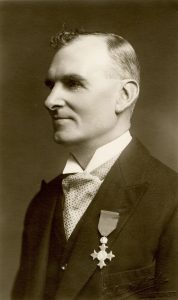
When Jim wasn’t working underground in the dark, cramped tunnels of the coal-pit he was a keen sportsman and became a prize winner in various amateur sports, especially in track events. He was also a good competitor at bowls, played football for St Helens Town in the Lancashire Combination, was a member of the local cycling club and enjoyed dancing, but what he loved most were the long walks over the countryside paths of his native village. The young schoolboy soon grew into a man who loved life and had ambitions to improve himself. He was a corporal in the Territorial Army and a member of the Miners’ Union where he sought to remedy the many avoidable perils and hardships connected with mining.
On the 28th of December 1910 Jim was married at Rainford Parish Church to Alice Hart Woods the daughter of the late Thomas Woods, a pipemaker. They took up residence at ‘Star Cottage’ in Mosbro Road and were soon blessed with the birth of their sons Frederick James and later William. About eight months after their marriage Jim’s mother died, aged fifty-six years. In 1912 Jim attended a course at the Wigan Mining and Technical College with the aim of raising his status from being just a coal miner and as a result he was awarded a certificate which qualified him for the position of Fireman [an underground official of the colliery]. However, he was never to see that certificate.
In the afternoon of Monday the 23rd of September 1912, whilst carrying out his duties as a shot-firer Jim was severely injured in an explosion and was not expected to live for more than a couple of hours. He had suffered fractures of one leg, one arm, one wrist and two fingers of his right hand. Three fingers were blown off his left hand, his left ear was almost severed and fragments of stone were driven into his flesh. Worst of all the blast from the charge had destroyed both eyes from which there was no hope of recovery. He was attended at the colliery by Dr. Francis Prosser and then conveyed by ambulance to St Helens Hospital. For months he lay in hospital fighting his way back to fitness and when he finally got home he set about regaining his independence. He resumed his walks around the village with only his stick to guide him round the old familiar routes. He learned to read Braille and to write using two typewriters, an ordinary one to print correspondence to sighted people and one to print in Braille for letters to his blind friends and notes for himself.
As a member of the Miners’ Union and the Labour Party Jim became interested in politics. He was elected to the Rainford Council in 1919 and served for thirty-eight years, several times as Chairman. Despite his blindness he was very farsighted to the needs of the community. When once asked what he counted as his three main achievements he replied “securing a modern sewerage system, the building of a fine new modern school and the reform of local housing”. In 1930 he accepted Lord Derby’s invitation to take a seat on the County Bench and in so doing became a Justice of the Peace attending the magistrates’ courts in St Helens and Liverpool. In 1937 he attended an investiture at Buckingham Palace where he was awarded the M.B.E. “for services to local government in Rainford and district.”
During World War II councillor Eden took on the added responsibilities of chairman of the Food Control Committee and organiser of the various fund raising events such as Warships Week, Holidays at Home Week and Wings for Victory. In addition, he was, at different times, chairman of the Management, the Water and the Finance Committees of the Council, a member of the Divisional Education Committee and chairman of the Old Folks Treat Committee.
On New Years Day 1957, after a short illness during which he was unable to attend to Council affairs, Jim was admitted to Whiston Hospital where he died three days later, aged 74 years. His funeral took place at Rainford Parish Church on Tuesday the 8th of January. Flags were flown at half mast as villagers assembled on both sides of Church Road to pay their respects to a well loved man. A large congregation, including all his colleagues on the Rainford Council, attended the service conducted by the Reverend Fielding Taylor.
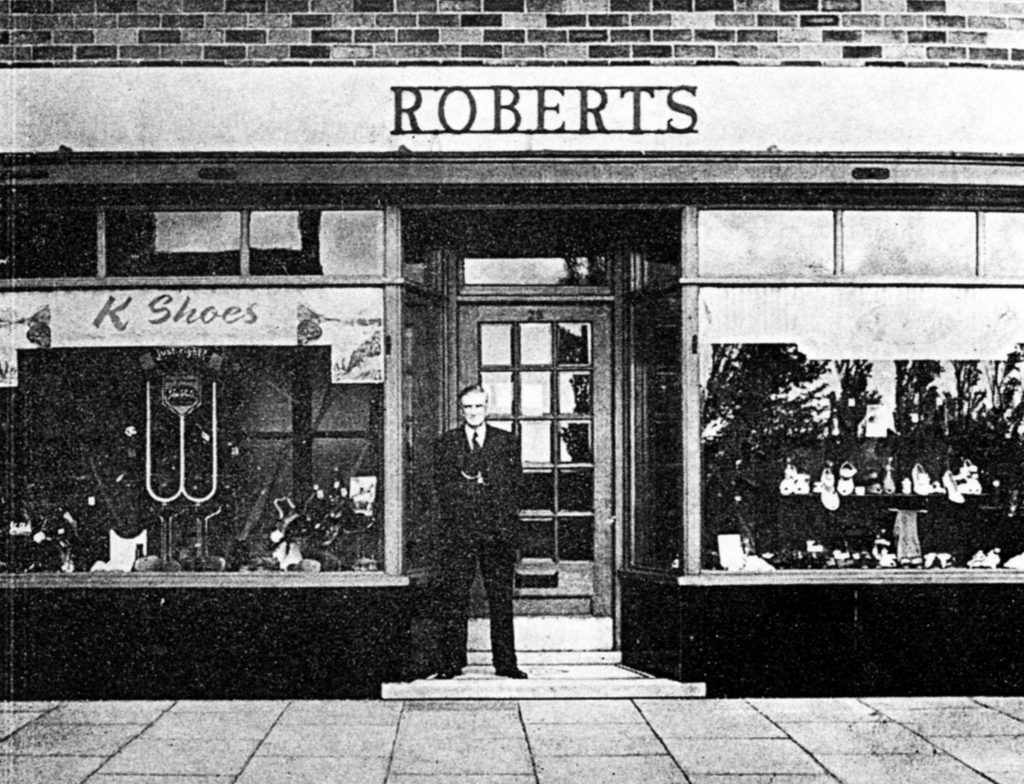
THOMAS ROBERTS 1892 – 1963
In about the year 1890 John and Ann Roberts left their hometown of Llanrwst in Denbighshire and together with their two young children they journeyed to Rainford where they settled into a cottage attached to the Rainford Potteries in Mill Lane. Soon after their arrival a third child, John, was born and eighteen months later, on the 26th of November 1892, a son, Thomas, was born. Thomas (or Tommy, as he was generally known) had not reached his second birthday when his father died, leaving his mother to bring up her daughter and three sons. To make matters worse Tommy had developed an abscess in his ear at the age of twenty months which led to him becoming totally deaf and dumb.
Being obliged to find alternative accommodation the family moved to one of the houses at Bank Villas in Church Road. Mrs Roberts took on a job as cleaner at the Westminster Bank and also took in washing and any other jobs in order to bring up her family. By 1900 life had become a little easier when Tommy, aged seven and a half, secured a place at the Residential School for the Deaf & Dumb, Melville Place, Liverpool, where he received some education. His sister Ellen, aged fifteen, was in service with Dr. Francis Prosser’s family, his eldest brother Evan, aged twelve, was an assistant sawyer and his other brother John, aged nine, was still at school.
After a very brief training in boot repairing Tommy had to leave the school at the age of sixteen and he managed to find work with a boot repairer in Parr for the weekly wage of three shillings. This was only made possible by the generosity of our Vicar, the Reverend John Bridger, who bought him a yearly Railway Contract Ticket until he died when Tommy was nineteen years old. Even though his weekly wage had risen he still could not afford the travelling expenses so when someone asked him to repair a pair of boots he went to the cobbler’s shop and asked if he could buy a piece of leather. The cobbler gave him the leather and wished him luck with his first repair job.
From then on Tommy took on boot repair jobs, working in his mother’s wash-house. He was determined to help support his mother and still save a little each week until he was able to erect a small shed in the back yard which became his first workshop. Week after week he worked and saved there for eight years by which time he was able to rent a little cottage attached to Church Farm and fronting onto Church Road. This remained his work place for the next nineteen years.
On the 2nd of March 1936 his beloved mother Ann Roberts died at the age of eighty-two years. She was buried in the Parish Church Graveyard and reunited with her husband after fifty-eight years of widowhood. Tommy then went to live with his eldest brother Evan who was by then married to Mary Peet the daughter of another boot repairer Peter Peet. They all lived together in Mosbro Road where Mary (who was forever known as Polly Peet) ran a dressmaking business and a small local shop. Tommy continued to work in his little workshop and eventually he was able to realise the dream he had lived with for many years. He bought a plot of land in Church Road and built a shop comprising a workshop, ladies’ & gentlemen’s shoe sales and a flat above (now Wendy’s Flowers shop). He proudly opened for business on the 19th of June 1938 employing a man to do the repairs whilst he took charge of the retail shop himself.
Tommy’s other ambition was to be able to employ deaf and dumb people to work for him. At the end of World War II he was in a position to employ a young girl to take charge of the retail shop and a deaf and dumb man to work in the repair shop. This man was Joe Fairclough who had received three years training in boot repairing at the Special Residential School for the Deaf in Manchester. Despite having a flat over his shop, Tommy chose to continue living with Evan and Mary in Mosbro Road until the fateful day of the 1st of August 1963 when he was accidentally hit by a vehicle at the top of Mosbro Road and suffered fatal injuries.
Fond memories of Tommy still linger with many people in the village. How proud he would have been to have known that his protégé, Joe Fairclough, had followed him in his ideals and ambitions and is still to this day working in his own little shop in the village.
JOSIAH LYON
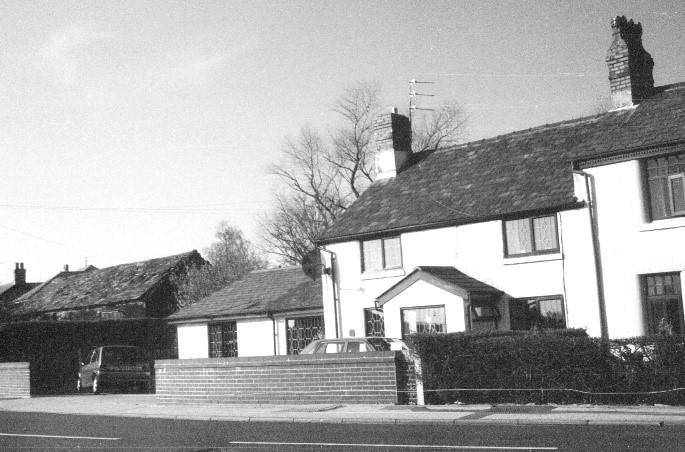
ROOKERY LANE FARM
JOSIAH LYON and son PETER LYON
ROOKERY LANE FARM and LYON’S HOUSE
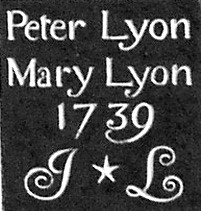
PETER LYON
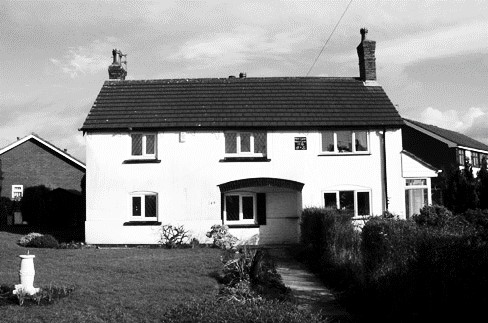
‘LYON’S HOUSE’
Rookery Lane Farm
These two properties shared a common history during the 18th century and are best described together. The farm house and adjoining barn, much altered and extended to form two dwellings, and the old stone barn, once used as a coal merchant’s depot, still stand on the bend at the bottom of Rookery Lane. ‘Lyon’s House’, across the corner of Rookery Lane and Church Road, also survives, now divided into two dwellings.
In 1716 Josiah Lyon renewed a previous lease from Robert Molineux of Mossborough Hall for this farm which included the land between Rookery Lane and Higher Lane and land to the west of Rookery Lane including that upon which ‘Lyon’s House’ was later built. Robert Molineux sold the freehold, along with several other farms, to the Earl of Derby in 1725 and the lease was renewed by him to Josiah Lyon in 1726.
When Josiah died in 1738 he was in possession by lease from the Earl of Derby of Rookery Lane Farm, were he himself lived, Fireclay Farm, a cottage near the moss side, and the wind and water mills in Mill Lane. He divided his property between his three sons Peter, George and Josiah with Peter receiving the Rookery Lane Farm and the cottage. Peter, then aged 39, had married Mary Eaton in 1719 and twelve months after his father’s death they had built a new house across the corner of Rookery Lane and Church Road, The date stone bearing their names also includes the initials J L, presumably in respect to his father Josiah Lyon.
“Lyon’s House”
The property descended to Peter’s son Josiah and then to his son also Josiah and it remained with the Lyon family until 1797 when John Dorning acquired the lease. He remained until about 1803 when the lease was renewed by Thomas Bassnett of Guild Hall and forty years later the farm was occupied by his son John and the house, by then a beer house, by Mary the widow of his son Richard.
In 1864 Richard Pennington of Muncaster Hall bought the freehold of the farm and in 1868 the freehold of the beer house from the Earl of Derby. When his estate was put up for sale by auction in 1895 the farm was occupied by Thomas Houghton and the house, then two cottages, by John Green and another.
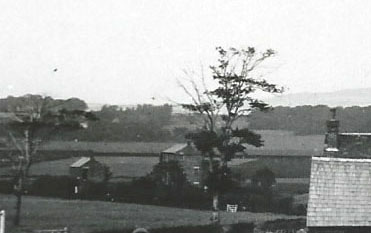
STEAM CORN MILLS IN MILL LANE
Looking down the lane from the Bottle and Glass towards Mill Lane, on the right hand side is Hill Foot Farm. Continuing along the lane towards Rainford Potteries, seen in the distance, we come to the Steam Corn Mill, built by William Berry in 1872, replacing the older one which was occupied throughout the 18th century by the Lyon family. In 1810 John Fishwick, miller and farmer, became the occupant of the wind and water mills and continued there until 1820 when he was followed by his son Thomas.
JAMES BIRCH
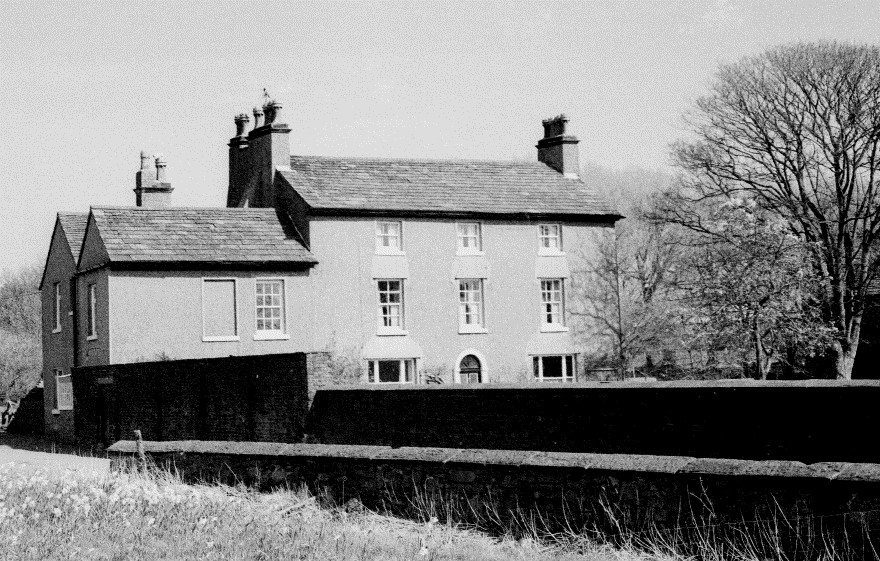
ROOKERY FARM AND ROOKERY HOUSE
The Rookery estate stretching from Higher Lane to the Rainford Brook belonged to the ancient Parr family. The Parrs were an important family and their occupation of Haysarm (now known as Heysome House in Crank) can be traced back as far as 1358. We can date their occupation of the Rookery estate to a least 1713 when John Parr leased some land from the Earl of Derby to add to his freehold house and land. This is clearly stated as ‘PARRS’ on William Yates’s Map of Lancashire surveyed in 1780.
John Parr junior, son of the above and merchant of Liverpool, was the next owner and about the year 1780 he was leasing the property to James Birch, farmer and pipe maker, of Rainford. In 1800 the freehold part of the property was sold by John Parr to a Mr James Wareing with Birch as the lessee and in 1805 James Birch junior, son of the above and also a pipe maker, bought the freehold from Mr Wareing.
The description of the premises conveyed in 1805 included “all that dwelling house known by the name of the New House” which was no doubt Rookery House, the old house becoming Rookery Farm house (now extinct). James Birch junior built a new pipe shop alongside the path to Mill Lane (the whereabouts of his father’s pipe shop, mentioned in 1780, remains unknown)
He remained here until 1818 when he gave up pipe making and took up the trade of brewer, leasing the brewery in Ormskirk Road from the widow of William Johnson, Rainford House. During his ownership several buildings were added to the estate, namely a cottage and pipe shop on Pasture Lane, the Queen Inn on Higher Lane and the windmill & Mill House at School Brow.In 1840 the farm house was occupied by James Dean, a farmer of 37 acres and Rookery House was occupied by joiner & builder John Southern, both tenants under James Birch.When James died in 1847 he left all his estate in trust for his only daughter Mary the wife of brewer Joseph Richardson.
When Richard Pennington of Hindley settled in Rainford and built Muncaster Hall he bought several farms in the area, one of the earliest being Rookery Farm in 1861, bought from the trustees of Mary Richardson. After Pennington’s death the whole of his land and buildings were bought at auction in 1895 by the Earl of Derby at which time the farm was occupied by William Green. Rookery House still stands but the separate farm house occupied by William Green in 1895 has long since disappeared.
Dr.ZACHARIAH SILLAR 1795 – 1877 PHYSICIAN and MAGISTRATE
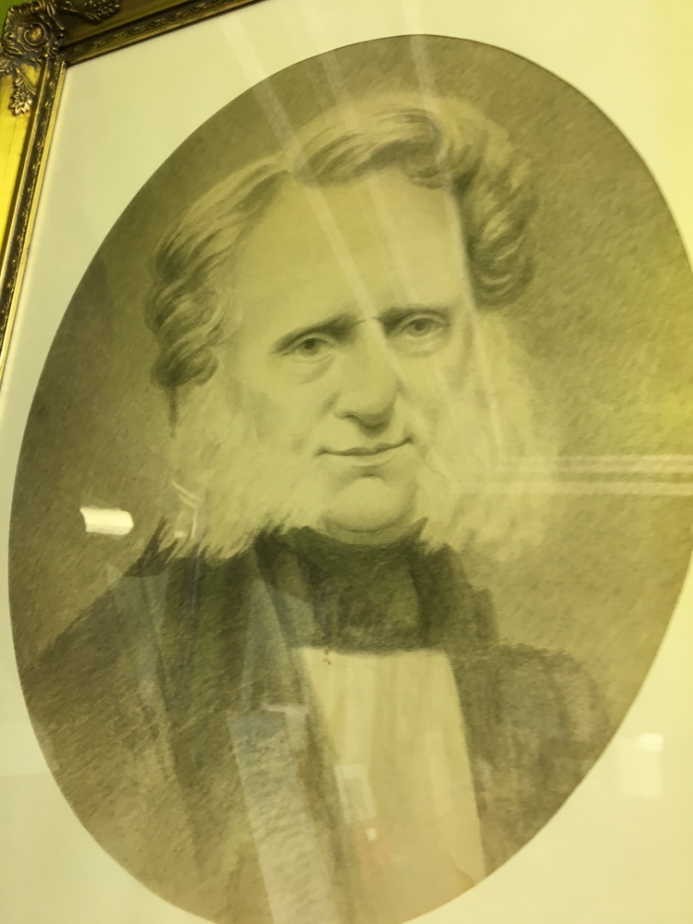
Dr. ZACHARIAH SILLAR
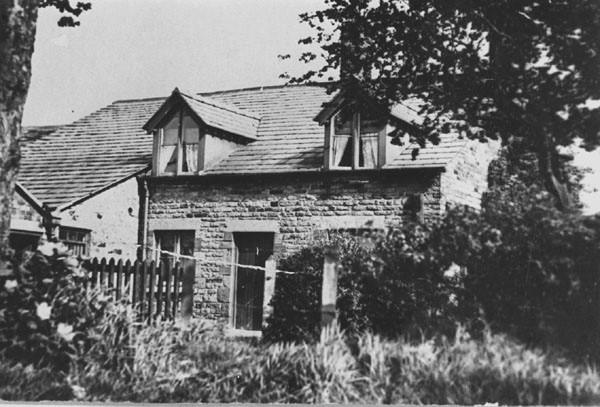
DAMSON TREE GROVE FARM
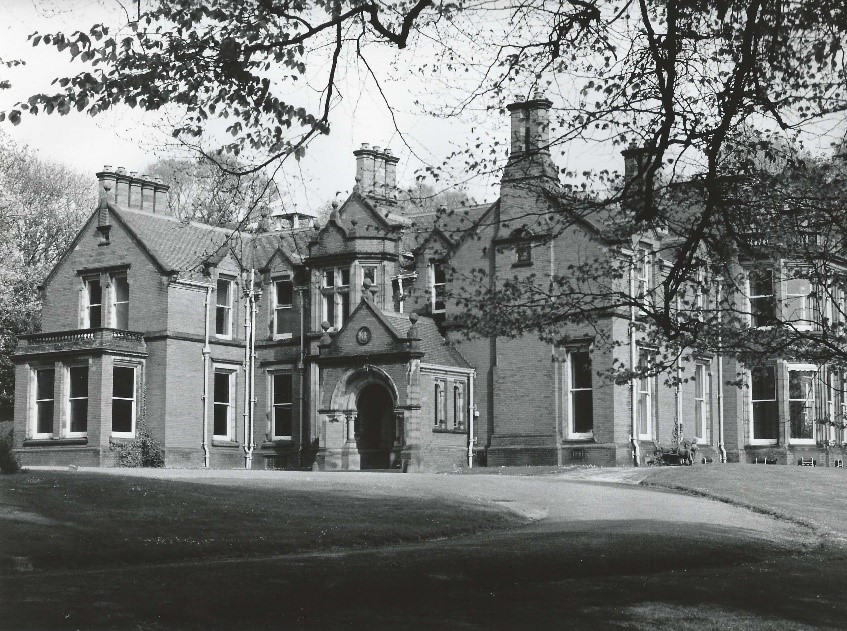
RAINFORD HALL

CRANK HOUSE
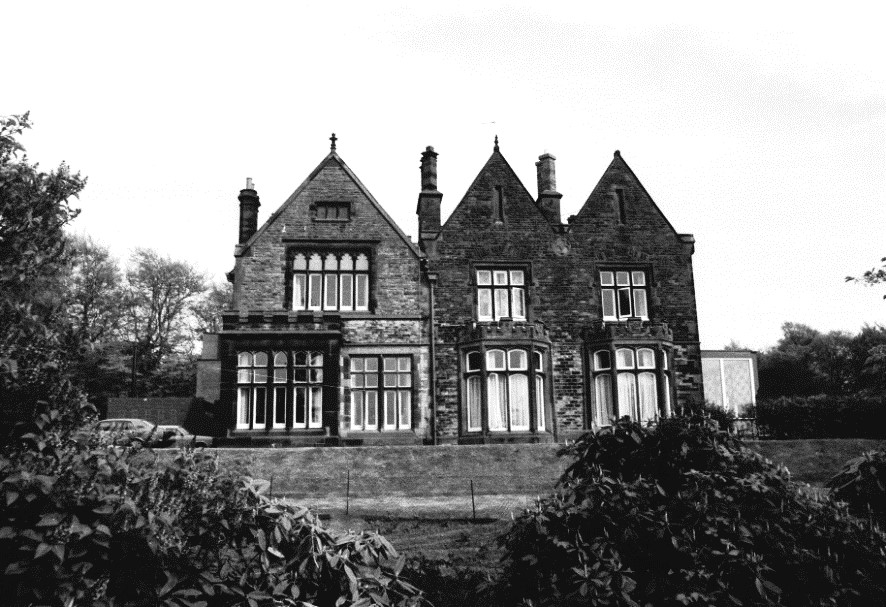
FAIRFIELD HOUSE
Dr. ZACHARIAH SILLAR 1795 – 1877
Zachariah Sillar was born in 1795 in Irvine, Ayrshire. He was the third of four children born to David and Margaret Sillar. David Sillar was a Scottish farmer, poet, grocer and schoolteacher who lived at Spittleside near Tarbolton, close to Lochlea, the family home of Robert Burns, the famous Scottish poet. David and Robert were close friends and David was even the subject of two poems by Robert – ‘ Epistle(s) to Davie’. David’s early financial situation was not stable but after several setbacks he inherited a fortune from his brothers and he went on to become a Councillor and Magistrate in Irvine where he also purchased several properties.
Zachariah was the only child of David and Mary to survive to adulthood. In 1816 he graduated as Doctor of Medicine at Edinburgh University and in the early 1830’s he moved to a medical practice in Liverpool. Given that two of his children were born in Liverpool in 1822 and 1825, it is very likely that he had previously been practising in Liverpool. His association with Rainford began with the purchase of Damson Tree Grove Farm in 1835 for £1,200 by which time eight of his nine children had been born. He sold it again in 1837 to the Earl of Derby but from later records he appears to have leased it back and rented it out to un-named tenants.
RAINFORD HALL
Having sold Damson Tree Grove Farm in 1837 Dr. Zachariah Sillar first took over the rent charge on the farmhouse known as Lyon’s House at Crank. Eventually becoming the owner of the whole estate he gave it the title of Rainford Hall.
CRANK HOUSE
In 1862 Dr Sillar sold some of his land to James Lathom, a timber merchant and builder who subsequently built a house on it, naming it Crank House (known locally as ‘Sawdust Hall’).
FAIRFIELD HOUSE
Another portion of the estate close to Rainford Hall was sold by Dr Sillar in 1861, this time to Samuel Robinson, a brewer from Warrington. Samuel built a large house and named it Fairfield House. This became known locally as ‘Beer Castle’.
Zachariah is described as a man of many interests who “as the owner and occupier of a 150 – acre farm at Rainford, won in 1842, the Liverpool Agricultural Society medal for laying 19,602 yards of drain to effectually drain 34 acres.”
In 1864, Dr. Sillar sold Rainford Hall to Dr. Alexander McKibben. By this time he has already left Crank to go and live in Kent where he died in 1877.
PETER MIDDLEHURST
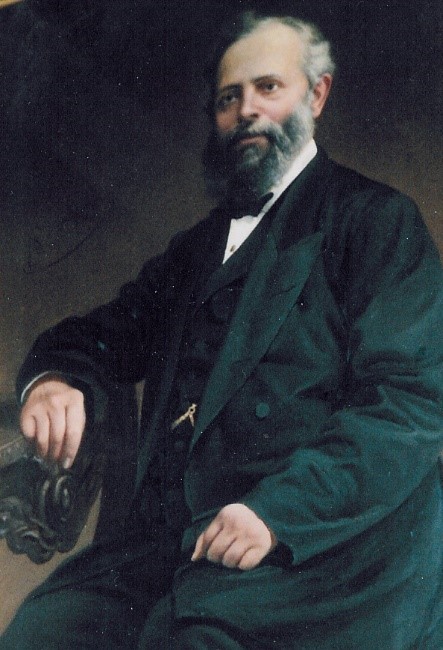
In 1869 Peter Middlehurst, Mason, of Rainford, married Ellen Shaw of Lydiate. Following in the footsteps of his father William, on the 15th January 1877, he submitted his plans to build a workshop in which to start his own business in Mill Lane.
On the 18th June 1877 plans were also approved for Peter Middlehurst, builder, to build a new house in Mill Lane which he named ‘Shawhurst’, linking his wife’s maiden name with the second half of his own surname. During his time at Mill Lane, Peter successfully built a thriving business.
In January 1888 Peter Middlehurst, aged forty-nine-years and an established builder, caught a chill returning from a visit to the Vatican and he died of pneumonia shortly after reaching home. Having no children to take over the running of the building company, it then passed to James Pilkington.
JAMES PILKINGTON
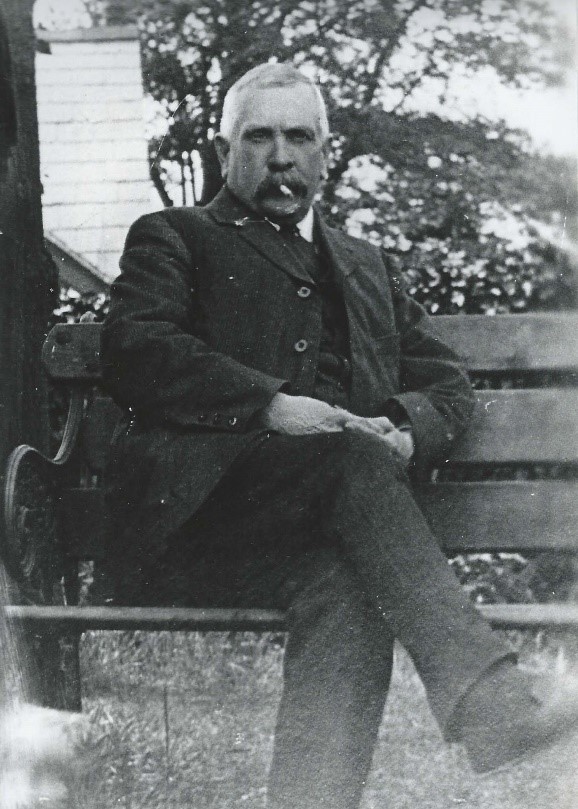
On 12 Nov 1895 the old Parsonage in Cross Pit Lane was sold by the Church to James Pilkington for the sum of £700. For this sum he got the house, the stables and 3015 square yards of land. He eventually took up residence and moved his offices to his new property, keeping his works yard at Mill Lane.
James Pilkington died on the 17th May 1918 and his wife Martha continued to live in ‘The Woodlands’ (originally the ‘old Parsonage’), the business being managed by Thomas Winstanley. Following the death of Martha Pilkington on the 22nd July 1927, Thomas Winstanley, already having purchased the builder’s yard in Mill Lane and occupying the offices and outbuildings at The Woodlands, purchased the house and made it his home.
Thomas Winstanley & Son continued in business at Mill Lane until c.2000 when the yard was sold for housing.
RICHARD PENNINGTON
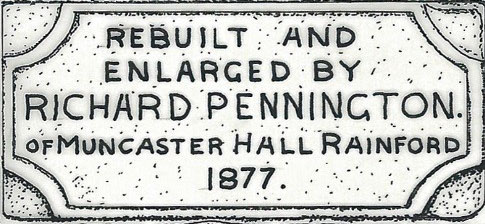
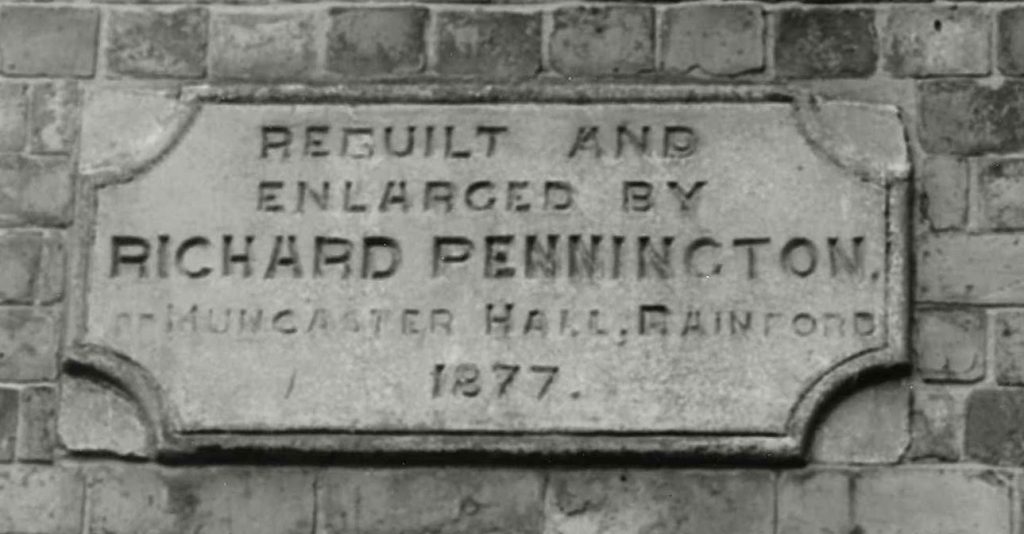
THE PLAQUE ON THE WALL OF THE C of E SCHOOL IN CROSSPIT LANE
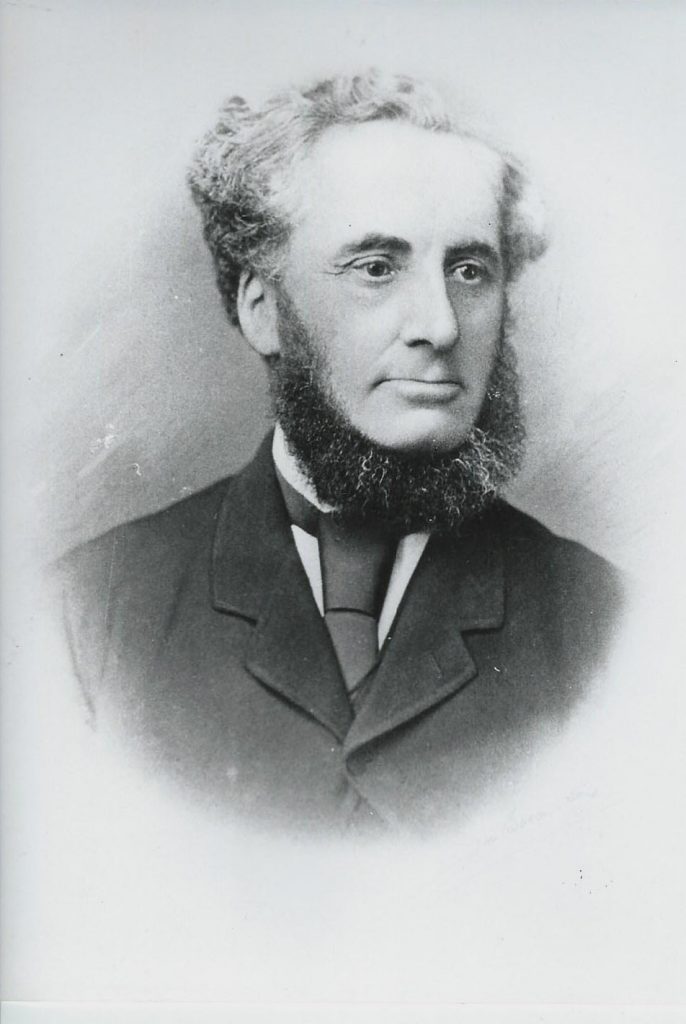
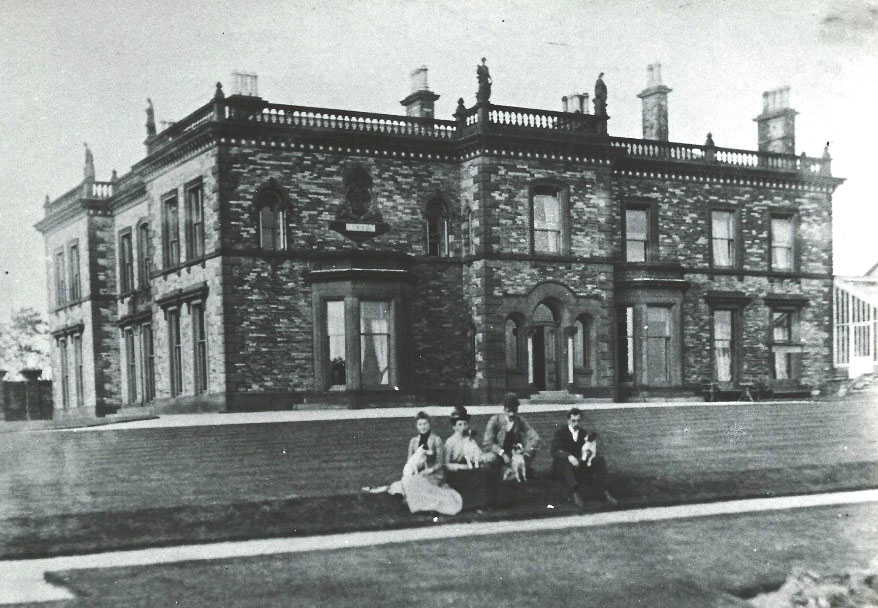
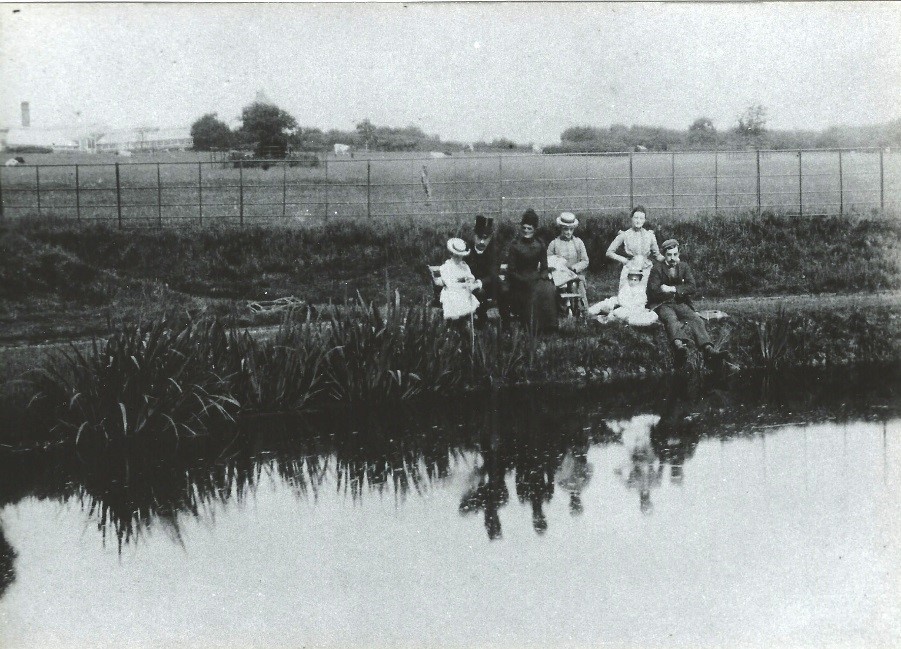
FAMILY GATHERING
Anyone who has looked up at the plaque set high on the wall of the old school building in Crosspit Lane will have seen the name Richard Pennington but few will have been aware of the impact that this businessman, originally from Hindley, had on Rainford during the 29 years of his residency in the village.
Richard was born in 1830 into the wealthy Pennington family, the owners of Worthington and Lowe Mills in Hindley, near Wigan. His association with Rainford began when he rented an old farm house known as Mount Pleasant situated in Jack House Lane, the present Muncaster Drive. Here, in 1858 he set up a home with Miss Elizabeth Cash, a former mill worker from Hindley with whom he had formed an intimate relationship and had two children. Rainford was far enough away from Hindley to avoid embarrassing scandal for his family but close enough for him to travel to his duties at the mill. In 1859 their third child was born and following the death of his mother who strongly opposed their marriage, finally Richard and Elizabeth were married in 1861.
Just twelve months before the wedding Richard had bought outright Mount Pleasant together with several acres of the surrounding fields. This was to be his first purchase in a continuing policy of buying up estates of land and property in Rainford. With the exception of a few plots, the triangle of land with its buildings formed by Higher Lane, White House Farm Road and Jack House Lane was soon added to his original acres.
During the course of the next five years Richard Pennington extended his estate with the purchase of The Dial House, White House Farm, Rookery House, Rookery Farm, Rookery Lane Farm, Primrose Hill Farm, Rainford Villa, and several small cottages. All the farms etc were occupied by existing tenants, Richard being purely a landlord and taking no active part in the running of them. By the end of this period he owned most of the land covering an area from Church Road to well beyond Higher Lane in one direction and extending from beyond Rookery Farm to Old Lane in the other direction.
These acquisitions were the first steps in creating the image of Richard as the local country squire, furthered no doubt by the frequent shooting parties held on his land to entertain his wealthy friends from the cotton trade. It is believed that scornful remarks from one of these friends about the size and condition of Mount Pleasant, prompted Richard to build the magnificent Muncaster Hall to replace it. No expense was spared and unusually for this time gas lighting was installed in all the rooms.
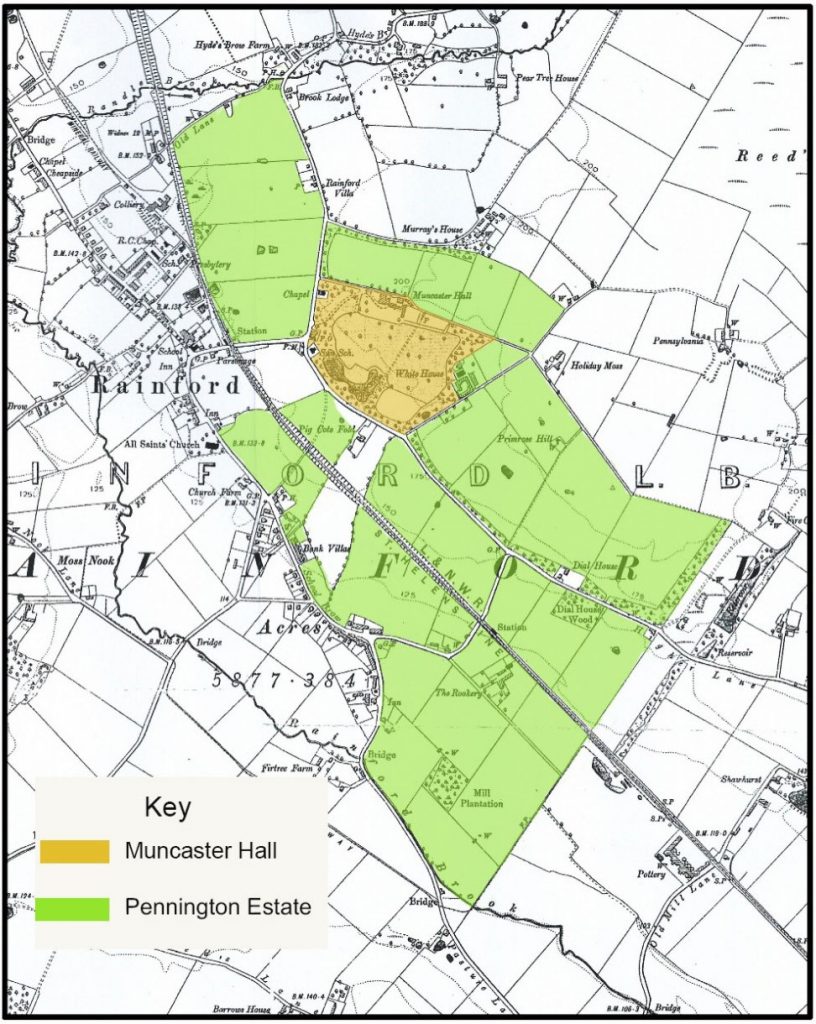
ORDNANCE SURVEY MAP 1892 SHOWING EXTENT OF RICHARD PENNINGTON’S RAINFORD ESTATE
This was served by a private gas producing plant situated across the park in the outbuildings built by Mr Pennington at White House Farm. These buildings and the chimney still stand in White House Farm Road. The area surrounding the hall was landscaped and the small existing pond was extended into the large lake with a small stone boat – house at one end that we see today. The small stone built Lodge on Higher Lane, home for the coachman and his family, still stands today as does much of the stone wall that Richard built around the perimeter of the estate. By the end of the decade Muncaster Hall was without question the premier house in Rainford, admirably reflecting Richard’s wealth and position.
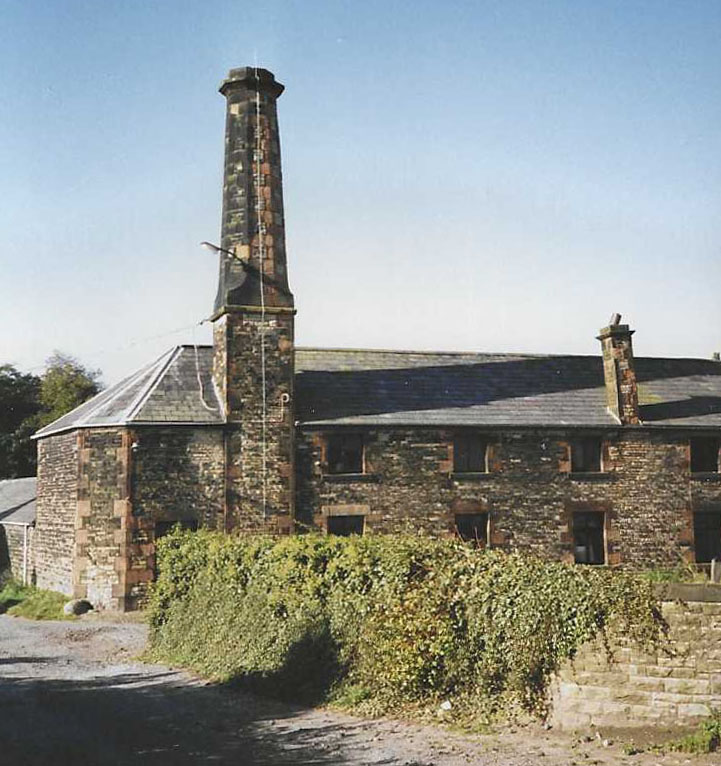
GAS WORKS CHIMNEY
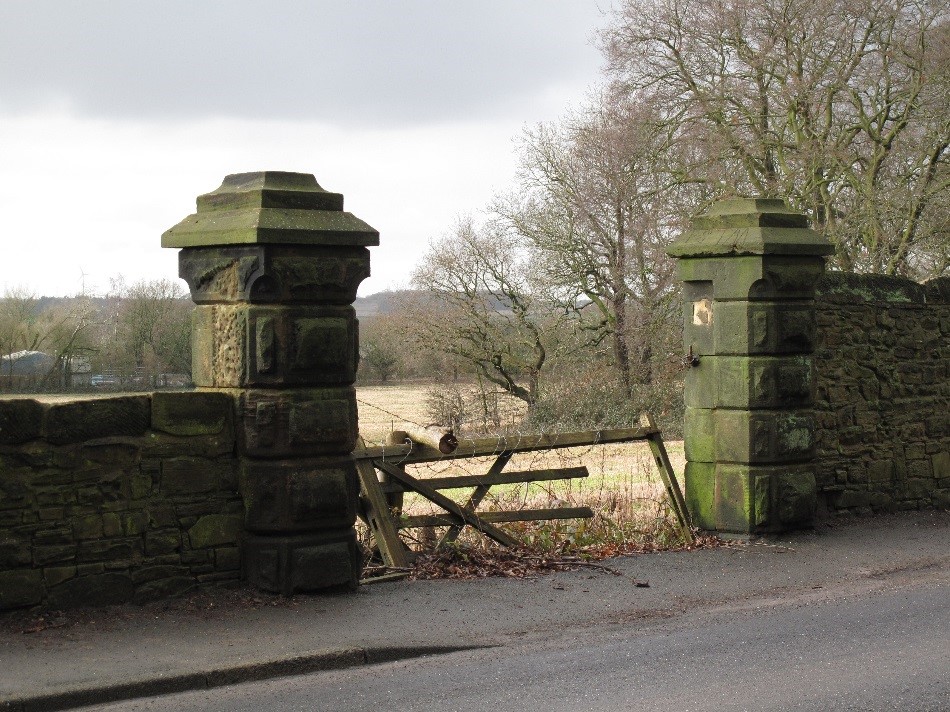
OLD GATE POSTS
It is suggested that the name Muncaster came from Richard Pennington’s desire to give the impression that he was descended from the Pennington family of Muncaster Castle on the west coast of Cumbria. Unfortunately for Richard there is no firm evidence of any connection between his ancestors and those of the Cumbrian family.
By 1871 Richard Pennington had ten children under the age of fifteen and had taken over the running of both mills in Hindley. During the ‘Cotton Famine’ of 1861 – 1865 he kept his mills running by buying cotton regardless of price and found full employment for all his work force. Sadly, his marriage did not last and in 1874 he and Elizabeth became legally separated and Elizabeth left the family home. Despite the break up of his marriage and his business commitments at Hindley, Richard did not desert the prominent position he had created at Rainford, as evidenced by the following extract from the St. Helens Reporter;
On the approach of every new year he entertained all the old folks of the village to a substantial dinner after which a convivial meeting took place, which was usually much enjoyed by the old people.
On the civic scene, Richard Pennington became the first chairman of the Rainford Local Board (the forerunner of the Urban District Council) and held this position until his death. He took an active part in the affairs of the Parish Church and in 1877 he performed one of his most generous acts. The old school on the corner of Crosspit Lane and Ormskirk Road had become inadequate for the needs of a growing village population and entirely at his own expense he had it demolished and a new two-storey building erected on the same site to serve as a Day and Sunday school for the Church. Interestingly, none of Richard’s children attended the school.
This was not the first time that Richard Pennington had shown his generosity to the religious institutions of Rainford as ten years earlier he had contributed the cost of the fifty eight foot high spire at the Congregational Church on Higher Lane. Later, in 1883, he donated £50 towards the building of the new Methodist Chapel on Ormskirk Road.
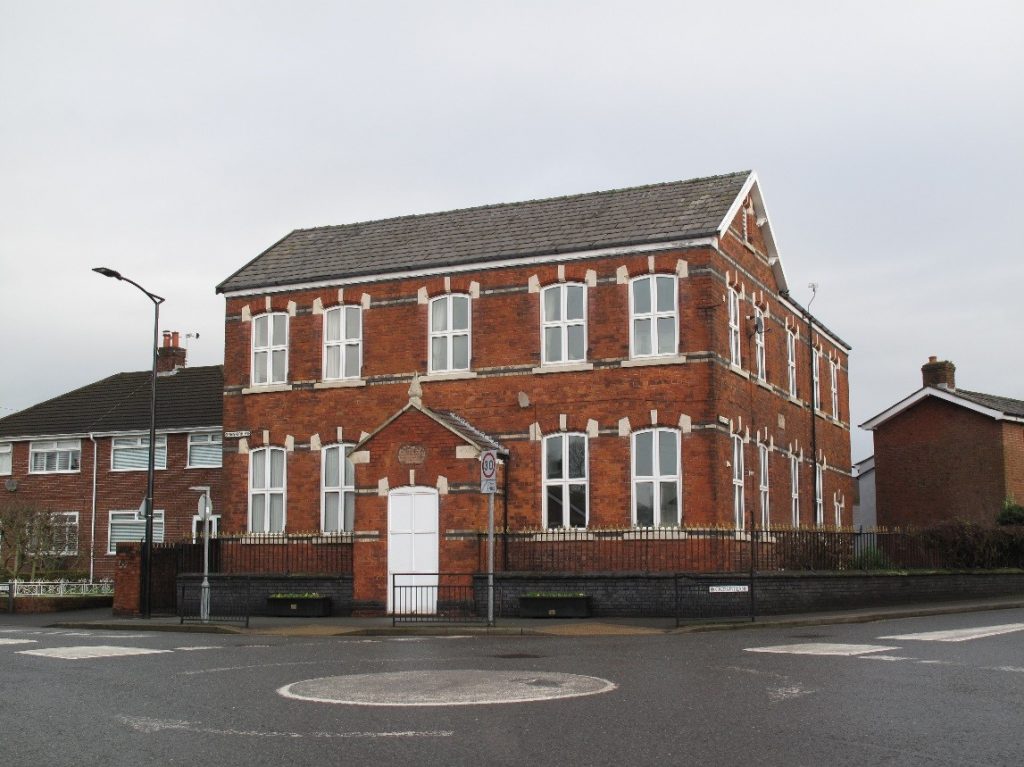
CHURCH OF ENGLAND SCHOOL. Rebuilt 1877
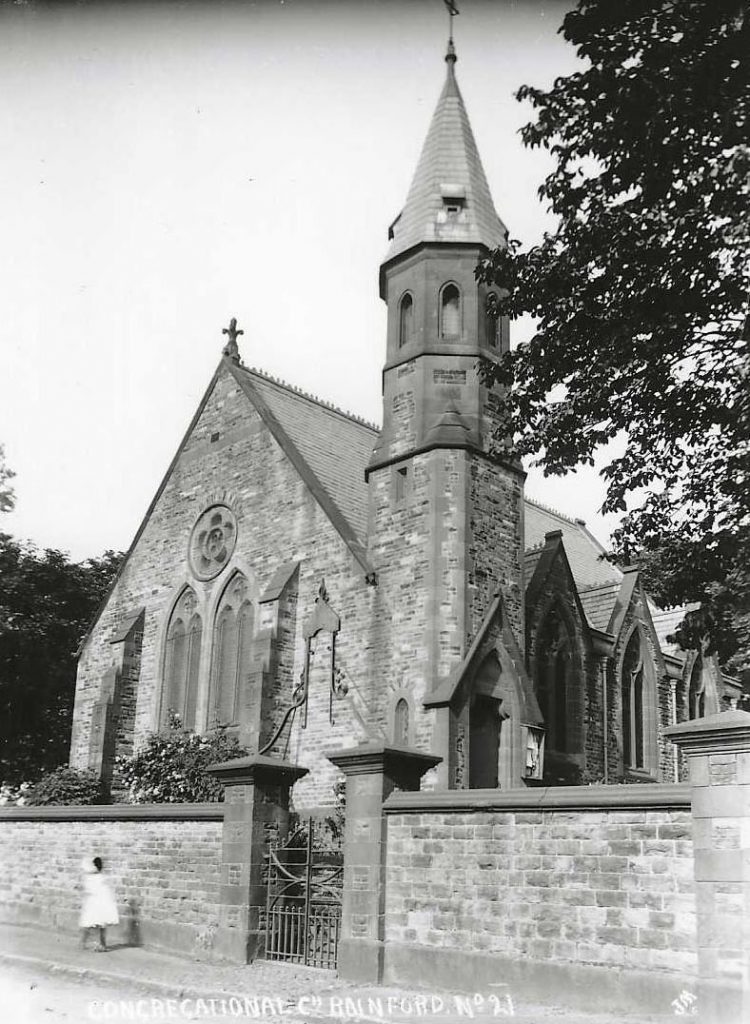
CONGREGATIONAL CHURCH built 1867
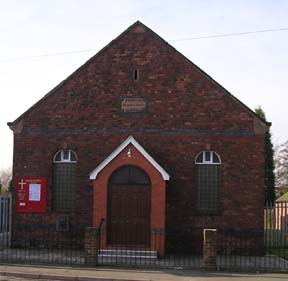
METHODIST CHAPEL 1883
Whilst the school building work was in progress the Parish Church had embarked upon a fund raising mission to finance the building of a new church to replace the small chapel which had stood for centuries the centre of the village. Mr Richard was soon elected as Treasurer of the Building Committee to which he immediately promised the sum of £500. When the time came to appoint a contractor to carry out the building work the Committee decided to accept the tender of Mr Hugh Yates of Liverpool in the sum of £5449 although this was £3 more than that of Mr William Willard of Wigan. This decision greatly disturbed Mr Pennington and he immediately wrote to the Committee asking them to withdraw his name from the Committee and from the list of subscribers. The tone of his letter suggests that there had been other, deeper, long-standing differences. This breach with the Church was never healed and a valuable supporter was lost forever.
Richard’s support for the residents of Rainford continued, however, and during a period of high unemployment work was found for some of the local men in building the stone wall which surrounded most of the Muncaster estate and many of the farms belonging to it. Much of this wall, and the large stone gate pillars within it, still remains throughout the length of Higher Lane and Rookery Lane. All this spending on the Hall, the School and other projects did not interfere with Richard’s continuing purchase of land and property in both Rainford and Hindley. He owned land at Crank including Crank Hall Farm, and parts of Grey Hall Farm and Potter’s Farm which were later sold to Colonel Richard Pilkington to become part of the Rainford Hall estate. He also held land to the north of Bushey Lane which he leased to Thomas Harding, the proprietor of the Bushey Lane Collieries.
Richard Pennington must have been a man of great energy and drive to have successfully combined the running of a large business with the holding of many public offices in both Rainford and Hindley but sadly it was not to last. In July 1887 he caught a chill and was diagnosed with congestion of the lungs. Five days later at the age of just 57, he died.
Typically, Richard had left all his affairs in order with provision made for all his children. When the youngest reached the age of 21 the estate could be sold and in January 1895 it was purchased at auction by the Earl of Derby for £37,000 (approx. £2,300,000 in 2023). Muncaster Hall ,stood for another 70 years under various ownerships until it was finally demolished in 1966 to make way for housing.
Richard Pennington’s service to the civic authority of his day must have played its part in forming the character of Rainford as we know it today. His influence lives on in some of the physical structures that still remain and in the naming of Muncaster Drive, Muncaster House within the High School house system and Muncaster Ward in political elections.
JANE FILDES 1795 – 1895
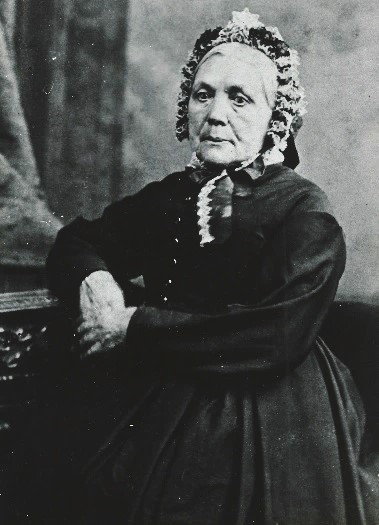
Although Jane was born in Eccleston, the fact that she was baptised at Rainford Parish Church, married a Rainford lad, lived and worked in Rainford for the last 75 years of her life and was buried in the Parish Church graveyard, justifies our claiming her as a true Rainford Centenarian.
Jane was born on 1st January 1795, the third child of John and Catherine Pinnington. John was a blacksmith in Eccleston and it was here that Jane was brought up with her six sisters and two brothers. She started school at the age of four, walking each day the two miles to Duke Street in St Helens but after a few years she could no longer attend regularly as her father was neglecting his business, spending much of his time in the Seven Stars public house and her mother was having to work to earn the money to bring up such a large family. Jane had to attend to the household chores, look after her younger sisters and help in the smithy at times.
When Jane was about ten years old her home life had improved and she was able to attend school again, first at a school in Denton’s Green, then one in Moss Lane, Windle and finally at Rainford Grammar School on the corner of Rookery Lane and School Brow. At the age of fifteen Jane went into domestic service and worked for several employers before obtaining a position in 1817 with Mr James Birch at Rookery House Farm in Rainford.
James Birch, a clay pipe manufacturer, and his wife Ellen, had been in residence at Rookery House since 1800, employing several pipe makers. In 1810 they took Thomas Fildes, the twelve year old son of one of his employees, as an apprentice for the term of seven years. Thomas completed his apprenticeship in 1817 which coincided with the arrival of Jane Pinnington as the new domestic servant. On 19th April 1818 they were married at St Mary’s Church in Prescot.
James and his wife and daughter had by this time moved to Rainford House where he took over the management of the brewery. Thomas also gave up pipe making and followed Mr Birch to the brewery where he soon adapted to the change in work. Jane remained at Rookery House for a while as caretaker until a new tenant could be found.
Thomas and Jane then moved to one of the original Maypole Cottages at the top of Cross Pit Lane where Jane gave birth to her two eldest daughters. Thomas was keen for Jane to make up for the years of education that she had lost and so she attended a school run by a Mr Smith at the bottom of Hydes Brow. She attended in the mornings with both her children at her side but it proved too much to manage and after six months she was obliged to give it up.
Thomas was promoted to brewer and his wages were raised to 12 shillings a week. The family moved in 1823 to one of the brewery cottages on Johnson’s Brow where they were blessed with two more daughters and a son. To supplement Thomas’s wages Jane embarked on a weekly round of jobs taking in laundry on Sunday evening, to be dried and ironed by Monday. On Tuesday and Friday she would take the brewery’s horse and cart loaded with tubs of barm ( ie yeast from the brewing process ) to be delivered to the bakeries in Ormskirk. On her return she would collect leather which had arrived by courier from Preston and deliver it to the Rainford shoemakers. She also transported luggage and delivered it to people’s homes. Wednesday and Thursday were for looking to her own housework and on Saturday she would work wherever she could find employment.
Barely seven years had passed before the untimely death of Thomas on 3rd May 1830 at the age of thirty-one years. It is possible that Jane and her children were obliged to leave the brewery cottage as they are next recorded as living at the junction of Hydes Brow and Reeds Brow. Jane was keeping a grocer’s shop with all her children except the eldest, Ann, who was in service at the Old Golden Lion Inn.
Jane eventually returned to Ormskirk Road living in one of the New Barn Cottages and trading as a confectioner. One by one her children had married with the exception of Mary who remained at home, unmarried and assisting in the confectionary business. For a brief period in the early 1860’s, when she was aged about sixty-six years, Jane lived at Murray House and served as a nurse for the infant children of Richard Richardson, one of James Birch’s grandsons. She then spent the rest of her life at her New Barn Cottage, where in 1871, at the age of 76, she was recorded as a confectioner, aided by her daughter Mary and granddaughter Jane, daughter of her son Richard.
Ten years later, the 1881 census shows that the household had not changed and Jane was still a confectioner but by 1891, at the age of 96, she was described as a retired laundress. From the Churchwarden’s book for the Parish it can be seen that Jane was paid, on occasion, for washing the surplices. The last recorded payment was in 1892 when she would have been 97 years old.
When Jane celebrated her centenary on 1st January 1895 the Reverend John Bridger administered Holy Communion at her house and it was reported that she possessed the whole of her faculties, although her sight and hearing were slightly impaired. Despite being under the care of Dr Brooks for a few months she passed away at home on 12th May and was buried with her late husband in the Parish Church graveyard.
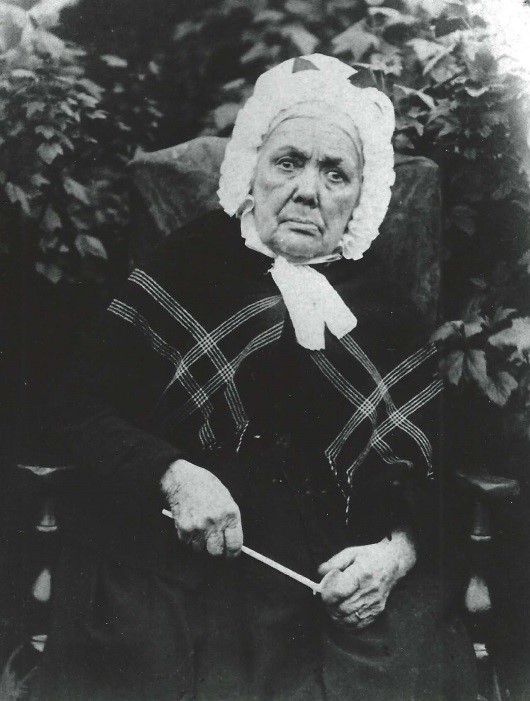

ROOKERY FARM
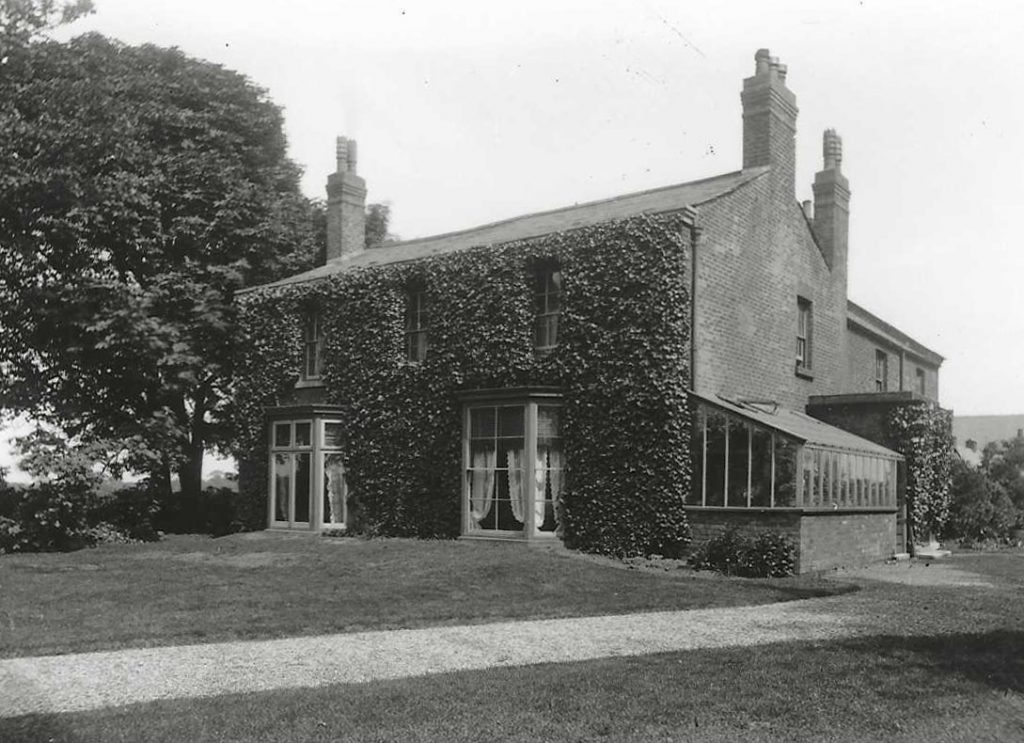
MURRAY HOUSE
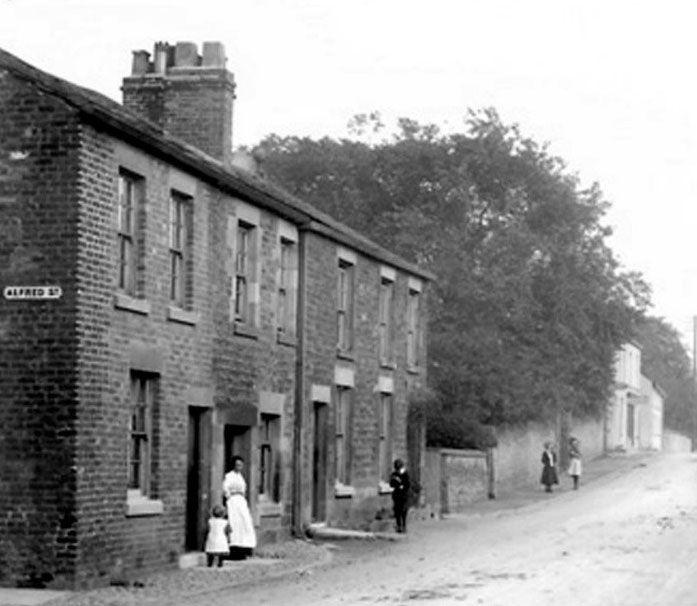
NEW BARN COTTAGES